 The leaves littered the playground, which made for some wonderful leaf piles for jumping in and tossing in the air and loading up the vehicles to haul out and dump outside the fence. There was lots of construction going on, with castles and roads being built. And there was a LOT of running and chasing and playing freeze tag, regular tag, and word tag. Friday students found and collected maple seeds, throwing them up and watching them spin down. As there are no maple trees in our playground, the students theorized that the wind must have blown the seeds in from the tree at the end of the driveway.
The leaves littered the playground, which made for some wonderful leaf piles for jumping in and tossing in the air and loading up the vehicles to haul out and dump outside the fence. There was lots of construction going on, with castles and roads being built. And there was a LOT of running and chasing and playing freeze tag, regular tag, and word tag. Friday students found and collected maple seeds, throwing them up and watching them spin down. As there are no maple trees in our playground, the students theorized that the wind must have blown the seeds in from the tree at the end of the driveway. 














 For Monday art the children were introduced to the artist Wassily Kandinsky, specifically his use of circles in his two paintings Squares with Concentric Circles and Several Circles. We then used circles to create our own art by dipping various sized circles into black paint and printing them on paper. When they were dry we painted them in with a variety of bright colors.
For Monday art the children were introduced to the artist Wassily Kandinsky, specifically his use of circles in his two paintings Squares with Concentric Circles and Several Circles. We then used circles to create our own art by dipping various sized circles into black paint and printing them on paper. When they were dry we painted them in with a variety of bright colors. 

 Gerrie Scott, who taught at Sunnybrook for 26 years with Gerry Tobin, came to visit for the second time this year and she introduced the song “Five Little Pumpkins.” Each of the children found their own pumpkin that had their name written on the back, then danced them around to the song. It was fun to learn a new song, which we taught to the rest of the class later in the week. Thank you, Gerrie!
Gerrie Scott, who taught at Sunnybrook for 26 years with Gerry Tobin, came to visit for the second time this year and she introduced the song “Five Little Pumpkins.” Each of the children found their own pumpkin that had their name written on the back, then danced them around to the song. It was fun to learn a new song, which we taught to the rest of the class later in the week. Thank you, Gerrie!
The water table was filled with water, fish, and rocks, while the sink and float science work engaged children in hypothesizing and experimenting with various items.





 We continued to learn about the oceans and life in the ocean. We examined a multitude of sea shells, observing their similarities and differences. We also looked at some sea urchins, sand dollars, sea stars, a “mermaid’s purse” or skate egg case, a crab, a dried cow fish, and a dried sea horse. We were introduced to a strange string of pockets and took some guesses about what it was. We were surprised when we opened one of the cases and out came some very tiny sea shells. It was a knobbed whelk egg case!
We continued to learn about the oceans and life in the ocean. We examined a multitude of sea shells, observing their similarities and differences. We also looked at some sea urchins, sand dollars, sea stars, a “mermaid’s purse” or skate egg case, a crab, a dried cow fish, and a dried sea horse. We were introduced to a strange string of pockets and took some guesses about what it was. We were surprised when we opened one of the cases and out came some very tiny sea shells. It was a knobbed whelk egg case!


 As there have been some pirates exploring the Sunnybrook Seas searching for treasure, we had a pirate visit who gave us instructions on how to draw a treasure map. We learned that the very first thing to do is to draw a compass showing North, South, West and East so we know which direction to hold the map and where to go. We also learned that it is important to include landmarks, including mountains and forests, and accurate numbers, shapes, sizes and locations of islands so we can properly locate where our treasure is buried, indicated by an X to “mark the spot.”
As there have been some pirates exploring the Sunnybrook Seas searching for treasure, we had a pirate visit who gave us instructions on how to draw a treasure map. We learned that the very first thing to do is to draw a compass showing North, South, West and East so we know which direction to hold the map and where to go. We also learned that it is important to include landmarks, including mountains and forests, and accurate numbers, shapes, sizes and locations of islands so we can properly locate where our treasure is buried, indicated by an X to “mark the spot.” 

 Halloween is fast approaching, and the children were excited to share what they will be for Trick or Treat time. They took turns telling everyone about their costumes and we learned some fun and spooky Halloween songs, including “Stirring our Brew,” “Five Little Pumpkins,” and “The Ghost of John.” We also read several Fall/Halloween stories, including Inside a House that is Haunted and The Little Old Lady Who Is Not Afraid of Anything.
Halloween is fast approaching, and the children were excited to share what they will be for Trick or Treat time. They took turns telling everyone about their costumes and we learned some fun and spooky Halloween songs, including “Stirring our Brew,” “Five Little Pumpkins,” and “The Ghost of John.” We also read several Fall/Halloween stories, including Inside a House that is Haunted and The Little Old Lady Who Is Not Afraid of Anything.













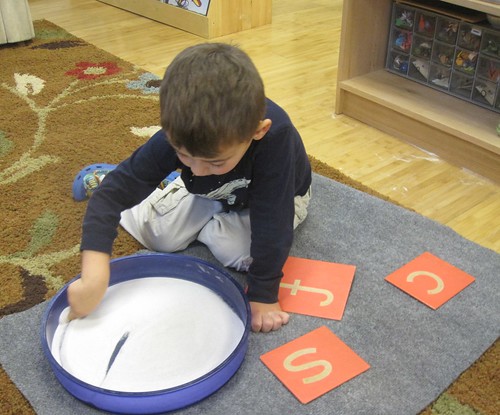





















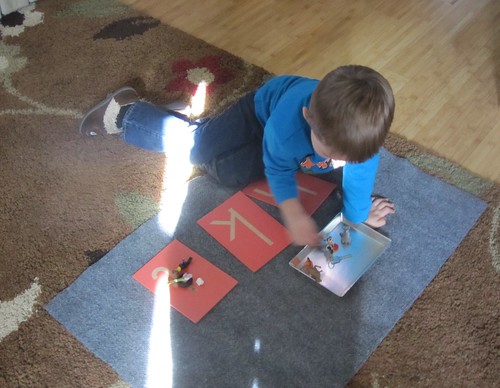
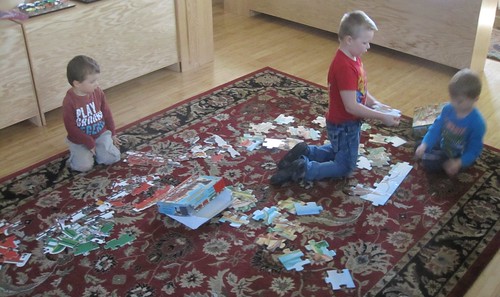
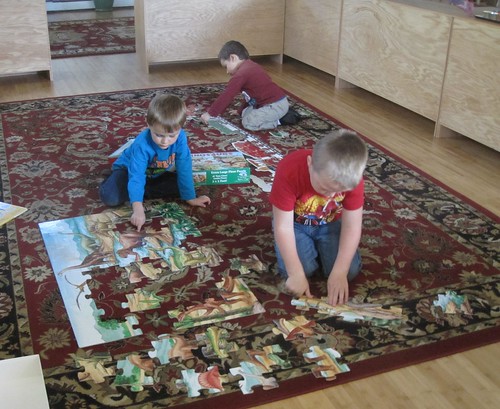

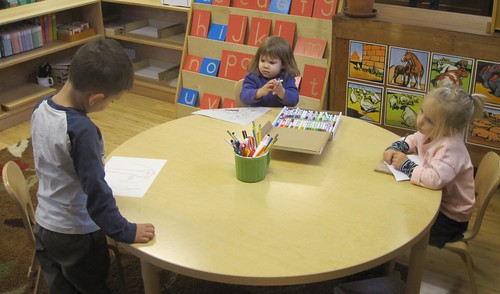




 Everyone was anxious for “Bring Your Family to School Night.” Each child decorated an invitation for their family and selected at least two preferred materials to introduce. We practiced giving a tour, making sure to show all the areas of the classroom, as well as taking out and demonstrating some of the materials. There was a lot of anticipation, and when the night finally arrived, everyone enjoyed guiding their families around and sharing their favorite things to do at school.
Everyone was anxious for “Bring Your Family to School Night.” Each child decorated an invitation for their family and selected at least two preferred materials to introduce. We practiced giving a tour, making sure to show all the areas of the classroom, as well as taking out and demonstrating some of the materials. There was a lot of anticipation, and when the night finally arrived, everyone enjoyed guiding their families around and sharing their favorite things to do at school. 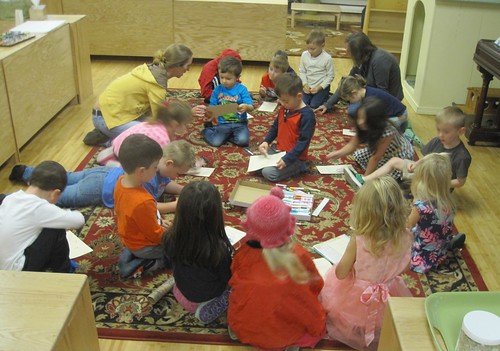 For Friday Science we learned about the three main zones of the ocean – the sunlight zone, the twilight zone, and the midnight zone. We discussed how the light, visibility, temperature, and living creatures change the deeper you go. We learned that the tallest mountains and valleys on earth are actually under water! We discussed why the sunlight zone, although the smallest area of the ocean, holds 90% of ocean life, and the children shared that it is because that is where the most sunlight is, which is needed for plants to produce food, which are the primary producers at the bottom of the food chain, and therefore responsible for feeding all other life in the ocean. We then made an ocean zones jar with colored corn syrup for the midnight zone, water for the twilight zone & oil for the sunlight zone.
For Friday Science we learned about the three main zones of the ocean – the sunlight zone, the twilight zone, and the midnight zone. We discussed how the light, visibility, temperature, and living creatures change the deeper you go. We learned that the tallest mountains and valleys on earth are actually under water! We discussed why the sunlight zone, although the smallest area of the ocean, holds 90% of ocean life, and the children shared that it is because that is where the most sunlight is, which is needed for plants to produce food, which are the primary producers at the bottom of the food chain, and therefore responsible for feeding all other life in the ocean. We then made an ocean zones jar with colored corn syrup for the midnight zone, water for the twilight zone & oil for the sunlight zone.


